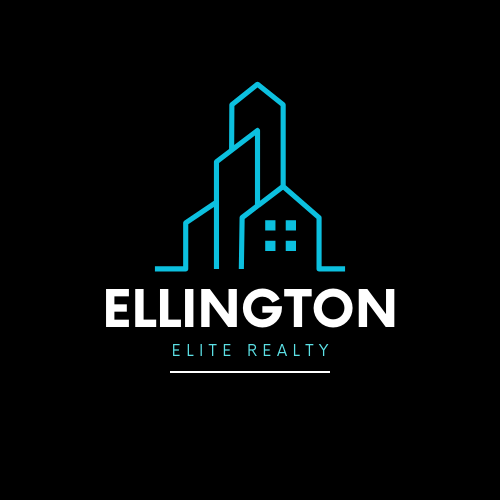
Orland Hills, IL: A Hidden Gem in Chicago’s South Suburbs for Real Estate Growth
Introduction
Orland Hills, Illinois, a vibrant village in Cook County, is a standout in Chicago’s south suburbs, offering a perfect blend of suburban charm, modern amenities, and strong community spirit. With a population of approximately 6,388 in 2025, Orland Hills—located just 30 miles southwest of downtown Chicago—boasts a tight-knit, family-friendly atmosphere, top-rated schools, and a robust real estate market. Known for its scenic Lake Ashbourne and Lake Lorin, as well as its well-maintained parks like Kelly Park, the village (incorporated in 1961 as Westhaven and renamed in 1986) is thriving without the need for revitalization. This article dives into Orland Hills’ dynamic real estate landscape, highlighting its appeal for homebuyers and investors seeking value and stability in 2025.
The Orland Hills Real Estate Market in 2025
Orland Hills’ real estate market is flourishing, characterized as a strong seller’s market in December 2024. The median home sale price reached $315,000, up 12.5% from the previous year, with a median price per square foot of $219, according to recent data. Homes move quickly, with an average listing age of just 8 days, a 51% decrease from the prior year, reflecting high demand. In April 2025, 15 homes were listed for sale, a 58.3% increase in inventory from March, with a median list price of $312,500. Notably, 66.7% of homes sold below asking price last month, offering negotiation opportunities for buyers.
The village’s housing options cater to diverse needs, from single-family homes to condos and townhomes. For instance, a 3-bedroom, 2-bath ranch in the Pepperwood subdivision, featuring granite countertops, stainless steel appliances, and a new bay window, is listed around $335,000. Condos in Liberty Square, such as a 2-bedroom unit with a fireplace and private balcony, start at $225,000. Larger properties, like a 4-bedroom, 2.5-bath Forester model with 2,800 square feet and a high-ceiling basement, are available around $459,900. The average annual property tax of $5,123 remains competitive, especially compared to nearby Orland Park ($367,971 median home price) or Tinley Park ($350,000).
A Thriving Community with Strong Appeal
Orland Hills is a well-established community that continues to shine, thanks to its strategic location and exceptional quality of life. Positioned between Orland Park and Tinley Park, the village offers easy access to I-80 and I-294, making downtown Chicago a 40-minute drive or a quick Metra ride via Tinley Park’s 80th Avenue or Rock Island stations. Residents enjoy proximity to Orland Square Mall, a regional shopping hub with anchors like Macy’s and JCPenney, and a variety of dining options along 159th Street, including local favorites like Buca di Beppo and The Creamery.
The village’s recreational offerings are a major draw. Kelly Park, a community centerpiece, features playgrounds, sports fields, and walking paths, while Lake Ashbourne and Lake Lorin provide serene settings for fishing and relaxation. Annual events, such as the Orland Hills Community Fest, foster a strong sense of belonging, with residents praising the village’s safe, clean environment. One local noted, “The parks are always clean, and there’s a real community feel here.” The diverse population, including a significant Arab American community (16.9% per 2010-2014 data), adds cultural richness, with local businesses like Al Basha Mediterranean Grill reflecting this vibrancy.
Education is a cornerstone of Orland Hills’ appeal. The village is served by Community Consolidated School District 135, with schools like Meadow Ridge Elementary earning high ratings for academic excellence. Victor J. Andrew High School in nearby Tinley Park, part of Consolidated High School District 230, is praised for its strong programs and extracurriculars, making Orland Hills a top choice for families. With a median household income of $118,281, well above the national average, and low crime rates, the village offers stability and opportunity.
Why Buy in Orland Hills?
Orland Hills is a prime destination for homebuyers and investors due to its affordability, modern homes, and strong market momentum. Homes often feature upgrades like new roofs, hardwood floors, and energy-efficient appliances, providing move-in-ready options at competitive prices. For example, a recently updated 3-bedroom split-level with a finished basement and new HVAC is listed for $349,900, offering excellent value. Investors may find opportunities in the rental market, as 21% of homes are rented, with properties like townhomes in the Westhaven subdivision allowing pets and rentals, appealing to young professionals and families alike.
The village’s proximity to major employers in Tinley Park and Orland Park, coupled with its quiet, suburban vibe, makes it ideal for those seeking a balance of work and leisure. Residents appreciate the convenience of nearby amenities, with one stating, “Everything you need—shops, restaurants, parks—is just minutes away.” Orland Hills’ well-maintained infrastructure, including recently paved streets and updated utilities, ensures a hassle-free living experience, further boosting property values.
Challenges and Considerations
While Orland Hills’ market is strong, buyers should act quickly due to the competitive 8-day average listing time. Some older homes, particularly 1980s-era ranches, may require minor updates, though many have been renovated with modern finishes. The village’s smaller size means limited nightlife within its borders, but nearby Tinley Park and Orland Park offer ample entertainment, from concerts at the Hollywood Casino Amphitheatre to dining at Lou Malnati’s Pizzeria.
Conclusion
Orland Hills, Illinois, is a thriving suburban gem that doesn’t need revitalization—it’s already excelling. With a median home price of $315,000, a fast-moving seller’s market, and a welcoming community, the village offers exceptional value for families, young professionals, and investors. Its top-rated schools, safe parks, and proximity to Chicago via I-80 and Metra make it a convenient and desirable place to call home. From modern condos to spacious single-family homes, Orland Hills’ diverse housing options, combined with its strong economy and community spirit, ensure its real estate market will continue to shine in 2025. If you’re looking for a stable, vibrant suburb with room for growth, Orland Hills is the place to invest.

